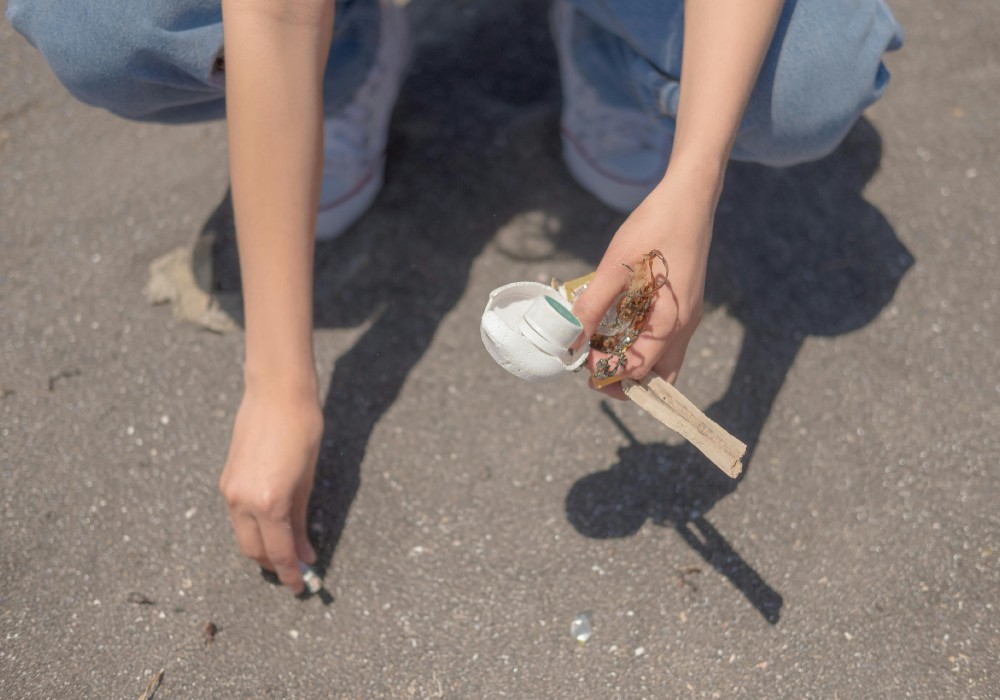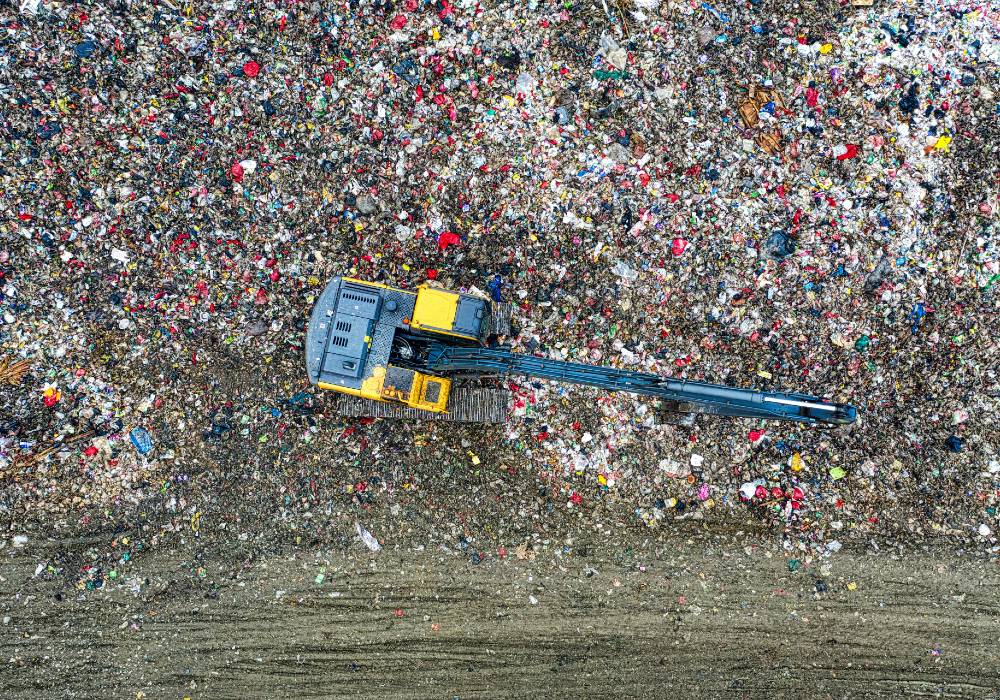The Dangerous Journey of Microplastics: From Our Daily Routine to the Environment
The silent invader threatening the ecosystem and human wellbeing

Key takeaways from this article
- Plastics degrade into microplastics, entering land and water ecosystems
- Fast fashion and single-use plastics are key sources of microplastic pollution
- Microplastics endanger wildlife and human health, emphasizing the need for mitigation efforts
If we were to ask you how many times you have witnessed a plastic bottle or a straw in the environment, what would your answer be? You might be uncertain about how often, but we’re quite confident you’ve seen one before.
The plastic pollution phenomenon is quite visible and alarming. Countless pieces of debris are scattered throughout our planet. Unfortunately, the issue doesn’t stop where our eyes do. There is more to uncover, a silent invader much harder to spot yet equally harmful: microplastics.
Plastic and microplastics: the main difference
Plastics, usually born from petrochemicals, endure as resilient materials but succumb to degradation, transforming into microplastics when exposed to sunlight, water, wind, extreme temperatures, and mechanical stress, also caused by water waves. These tiny particles, measuring from 100 nanometers to 5 millimeters in size and lighter than their parent plastics, enter the terrestrial atmosphere and aquatic environments, primarily sourced from activities like textile production or single-use plastics.[1] Despite efforts by wastewater treatment plants, these particulates escape capture, sneaking into our water systems and subtly polluting the environment.

Why do microplastics from clothes and everyday materials pollute?
In recent years, synthetic fibers have emerged as one of the major protagonists of fast fashion, resulting in massive volumes of waste. Synthetic particles may enter the aquatic environment during usage, machine washing and drying of clothes, or the breakdown of waste material amassed in landfills.[2] As it stands, textiles are the leading known source of microplastic pollution, with scientists estimating that 35% of this contamination comes from synthetic fibers.[3] Single-use plastics—plastic products designed to be used once and then discarded, such as straws—are another principal source of microplastic pollution.

As the size of these synthetic particles decreases, they become easier to ingest and to move through the air, and the danger to wildlife and ecosystems increases. In fact, microplastics have been found in a variety of marine creatures, including plankton and whales, commercial seafood, and even drinking water. To make things worse, microplastics in the water may combine with other hazardous compounds before being consumed by marine creatures.[4] These little particles are not only detectable in wildlife. In 2022, for the first time, they were also discovered in human blood.[5] This has raised concerns about the possibility of them traveling around our body and lodging into our organs.
How to kick the silent invader out
We now understand that microplastic pollution, while invisible to our eyes, poses a tangible threat to the health of our ecosystem and our well-being. Though the complexity of this issue may feel akin to navigating a maze with our eyes closed and our hands tied behind our backs, many technological and scientific advancements have been made in the last few years. Aquafil, for example, led the development of the first official microplastic measurement system, paving the way for a better understanding of why they are released and how to mitigate the problem. While technicians and thought leaders keep the progress going, we, as final consumers, must maintain faith in the small, everyday habits that can help reduce the amount of these tiny particles escaping into the environment.

In the following article, we will discuss some precautions and tricks to help reduce the spread of microplastics in our daily lives.
[1] “Preparation and Analysis of Standard Microplastics” available at: https://www.intechopen.com/chapters/84962
[2] “Preparation and Analysis of Standard Microplastics” available at: https://www.intechopen.com/chapters/84962
[3] “Your Laundry Sheds Harmful Microfibers” available at: https://www.nytimes.com/wirecutter/blog/reduce-laundry-microfiber-pollution/
[4] “Microplastics” available at: https://education.nationalgeographic.org/resource/microplastics/
[5] “Microplastics found in human blood for the first time” available at: https://www.theguardian.com/environment/2022/mar/24/microplastics-found-in-human-blood-for-first-time#:~:text=Microplastic%20pollution%20has%20been%20detected,and%20may%20lodge%20in%20organs.
Author: Tommaso Corso
Latest from the Magazine